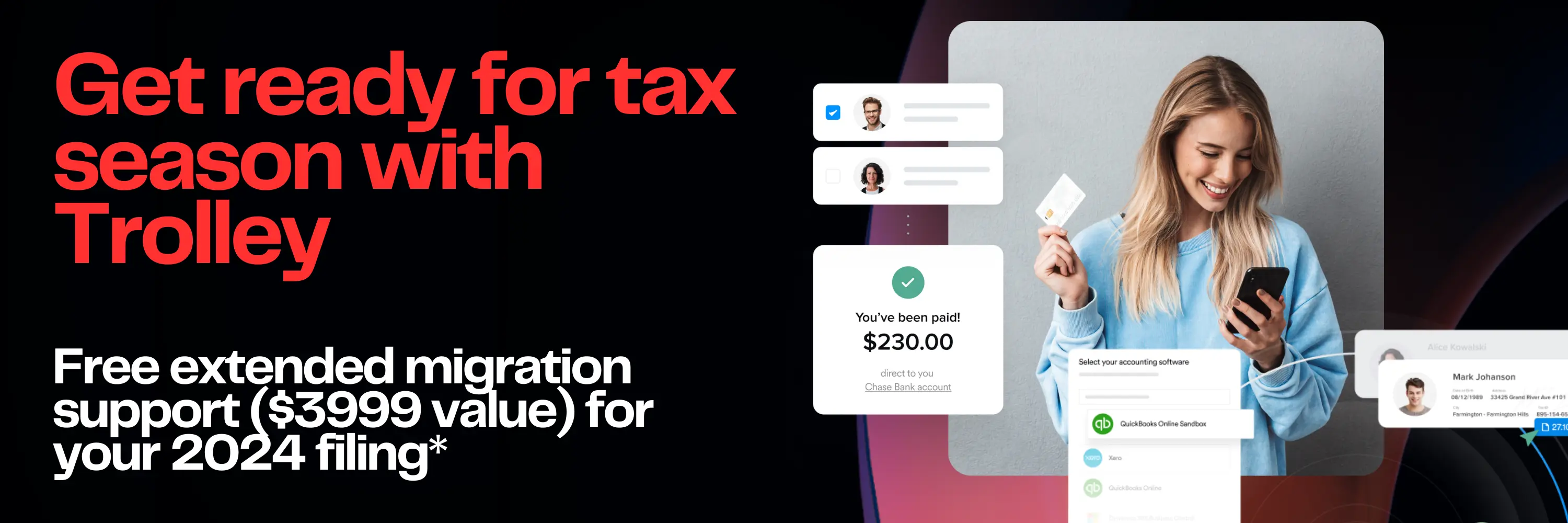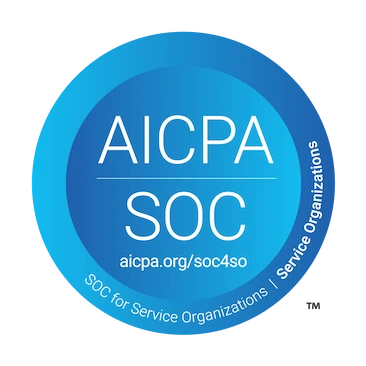11/22/2023 update: The IRS has announced another delay of its Form 1099-K threshold changes. For calendar year 2023, with reporting due in January 2024, the reporting threshold for TPSOs remains at $20,000 in gross amount of aggregate payments and 200 transactions.
The IRS plans to propose a $5,000 reporting threshold for the following year, with the aim of eventually working towards the $600 threshold. This change does not affect state reporting thresholds—many of which are already $600.
Who is required to complete a Form W-9?
Anyone who does work for a company but was not the actual employee of that company is required to fill out Form W-9, Request for Taxpayer Identification Number and Certification, for every company for which they performed non-employee work. Form W-9 is known as “information reporting” federal income tax forms. Form W-9 is used in the U.S. when working as a freelancer or independent contractor. Depending on the nature of the work, the company then uses the information you provide on the form to prepare Form 1099-NEC, 1099-MISC, and/or 1099-K, reporting to the Internal Revenue Service the amount of income is paid to you or your company.
Who might be asked to fill out a Form W-9? Freelancers, for one. Freelancers are brought in to perform work on projects that are short-term. This involves work such as writing, research, or graphic design work. They aren’t needed full time, as the work will run out. Freelancers are required to fill out a W-9 form

What defines an Independent Contractor?
According to the IRS or Internal Revenue Service, you are eligible for a 1099-NEC, Nonemployee Compensation, when you work as an nonemployee (freelancer/contractor) and are compensated for services performed for a company rather than being a direct employee. Generally, as an independent contractor, you have the right to control what you work on and how it will be done. Your client can only “control or direct only the result of the work.”
Here are some examples that may be considered independent contractors:
- Driver for a ride sharing company
- Freelance developer or graphic designer
- Airbnb host
- Social media consultant
- General contractor
What if I do not collect a Form W-9?
If you have not collected a W-9 form from your contractor/vendor and did not issue the required 1099-NEC form, the IRS will hold you responsible for not withholding 28% tax on the amount paid and assess penalties for not issuing the required form. The penalties are $260 for each failure to file and an additional $260 for each failure to issue a required 1099 Form. The IRS is very serious about 1099’s being filed and in addition to the potential penalties for not filing, they can/will deny the deduction for that expense under audit. It is strongly recommended that you request a W-9 from all vendors you do business with. This will allow you to accurately generate the required 1099’s and if you are ever audited, you can produce the W-9’s and show that you are in compliance.
What is a 1099-Misc Form?
The 1099-MISC form is used, as the name implies, for different miscellaneous reasons, but two common usage is for businesses to report payments of $10 or more in gross royalties or $600 or more in rent paid to a person who is not an employee.
Who is required to fill out a Form W-8?
A Form W-8 is completed by nonresident aliens (NRA) who do work and/or make income in the U.S. or foreign business entities who make income in the U.S. These tax forms are only used by foreign persons certifying their foreign status.
There are several versions of the W-8 form. It certifies foreign status, regarding tax withholding on income. The purpose of the Form W-8 is to establish the identity and status of your Recipient/Vendor as a non-U.S. person, that they are the beneficial owner of the revenue and whether a lower rate of withholding applies as the result of a treaty claim. Even if their country does not have a treaty with the US, the form is used to establish that they are not a U.S. person.
Tax-free income, as specified by this form, includes interest, dividends, rents, royalties and annuities. The form allows foreigners to claim tax treaty benefits. To receive benefits from a tax treaty between the U.S. and the foreigner’s home country, the filer must provide certification of residency in the indicated country as well as a tax identification number. It is typical for foreigners to be taxed at a rate of 30% on income that is received from a U.S. source.
What is a Form 1042-S (Foreign Person’s U.S. Source Income Subject to Withholding)?
Form 1042-S reports taxable federal income and the corresponding federal tax withholding relating to the following types of income received by U.S. non-residents:
- Wage payments made to employees who have claimed tax treaty benefits
- Service payments made to independent contractors for work performed in the U.S.
- Royalty payments issued to individuals or entities.
What is FATCA?
The Foreign Account Tax Compliance Act (FATCA) imposes withholding rules on U.S. persons making payments of U.S. source income to foreign entities. The FATCA withholding rules require a 30% withholding tax on certain payments of U.S. source income to foreign entities that fall within specifically defined categories. Payors of U.S. source income to foreign entities need to obtain a W-8BEN or W-8BEN-E from the foreign payee in order to document the payee’s FATCA status and substantiate exemptions from this withholding obligation.
The primary goal of FATCA is to target non-compliance by U.S. taxpayers with foreign income or assets. FATCA does so by initiating “1099-like” reporting requirements on foreign financial institutions and on foreign entities with U.S. account holders or owners. Noncompliant foreign financial institutions and foreign entities may be subject to a FATCA withholding tax on payments received from U.S. sources.
What types of payments are subject to FATCA?
FATCA provisions apply to “withholdable” payments when paid to a non-U.S. person. “Withholdable payments” are defined as:
Any payment of interest (including any portfolio interest and original issue discount), dividends, rents, royalties, salaries, wages, annuities, licensing fees and other fixed or determinable annual or periodic (FDAP) income, gains, and profits, if such payment is from sources within the United States.
What is the potential cost to my company if we do not ensure compliance with these regulations?
If you are not in compliance with the non-resident alien (NRA) regulations, your US Withholding company or multi-national will be exposed to a liability for withholding tax. Withholding tax that could have been withheld from the payment now will become the liability of your company. As the withholding agent, you will be required to remit the proper withholding tax to the IRS.
In addition, you may be required to pay interest and penalties with regard to under-withholding, or incorrect reporting of amounts paid.
What is FDAP?
FDAP is an abbreviation for Fixed, Determinable, Annual or Periodic income. FDAP income applies to foreign persons earning income in the U.S; such persons will be subject to 30% withholding tax, or a lower rate if there is a tax treaty between the United States and the country of residency.
Under what circumstances would a company become subject to U.S. NRA reporting or withholding requirements?
When a company makes a payment of U.S. sourced fixed or determinable annual or periodic (FDAP) income to a foreign person not associated with such person’s U.S. trade or business, that company may have a non-resident alien (NRA) reporting or withholding responsibility.
If a payment to a foreign person (foreign vendor) is determined to be FDAP and U.S. sourced, how much should be withheld?
The statutory withholding rate is generally 30%. This rate should be generally applied to the gross amount of the payment.
Can the statutory rate (30%) be reduced?
If the foreign vendor is a resident in a country that has a tax treaty with the United States, the rate may be reduced. Each treaty has specific provisions which determine the reduced withholding rate. These provisions reduce the withholding rate based on the type of income and the status of the recipient.
If my payouts are made with PayPal, do I still need to collect W-8?
Yes. According to U.S. tax law, any U.S. company must withhold a percentage of payments to citizens and entities in other countries depending on the tax treaties and remit these withholdings to the government. Foreign persons are subject to U.S. tax at a 30% rate on income they receive from U.S. sources that consist of:
- Wage payments made to employees who have claimed tax treaty benefits
- Service payments made to independent contractors for work performed in the U.S.
- Royalty payments issued to individuals or entities.
Non-U.S. persons will be required to complete a Form W-8BEN/W-8BEN-E and will be issued a Form 1042-S. W-8BEN is for individuals. W-8BEN-E is for entities.
How do I find out if the payment is U.S. source income?
The source of income is determined under U.S. tax rules based on the type of income.
Compensation for personal services, whether employment or self-employment, is generally sourced where the services are performed, not where the income is paid. Therefore:
- Income for services performed outside the United States is foreign-source and not subject to U.S. tax for a non-resident alien (NRA), even if paid by a U.S. employer or payer.
- Income for services performed in the United States is U.S.-source income and subject to U.S. tax even if paid by a foreign employer or payer
Tax withholding on income other than personal services (i.e. Royalties) from a U.S. source ranges from 0% to 30% depending on the income type, country of the seller, and whether there is a tax treaty between the US and the seller’s country.
A list of the applicable tax treaties and withholding tax rates can be found here.
How does this apply to a U.S. company?
According to U.S. tax law, any U.S. company must withhold a percentage of payments to citizens and entities in other countries depending on the tax treaties and remit these withholdings to the government.
U.S. persons will be required to complete Form W-9 and will be issued a Form 1099-MISC income summary each year.
Non-U.S. persons will be required to complete a Form W-8BEN/W-8BEN-E and will be issued a Form 1042-S. W-8BEN is for individuals. W-8BEN-E is for entities.
What is U.S. income tax withholding?
Non-US persons (whether individuals or entities, such as foreign corporations) are subject to U.S. tax at a flat 30% rate on certain kinds of income they receive from US sources. Sometimes an Income Tax Treaty negotiated with the US and another country can be used to reduce this tax rate.
The tax is withheld at the source by the payor of the income. This payor, also known as a “withholding agent”, has responsibility for withholding the required tax and paying it over to the US Internal Revenue Service (IRS). In the event, withholding is required and the withholding agent fails in its duties, the agent can be held personally liable for the tax. For this reason, payors are usually very careful to ensure they have undertaken all the necessary actions, part of which is to obtain a certification from the payee as to whether the payee is a US person or a foreign person.
The 30% (or lower treaty rate) withholding tax is required only for payments made to foreign payees, it is not required when the payee is a US person. Foreign persons complete one of the forms in the Form W-8 series (e.g., Form W-8 BEN). US persons do not complete a form in the W-8 series. Instead, they use Form W-9.
When the payor of the income has the W-8BEN on file, the payor will be apprised that the payee is a non-US person and will undertake its withholding duties. If the payee is a US person with a completed Form W-9, the payor will know it does not have to withhold this 30% tax.
How do I determine the tax withholding rate?
Recipients/Vendors who are residents in certain countries that have an income tax treaty with the U.S. are eligible for a reduced tax withholding rate. In order to benefit from tax treaty reduction, the company must have documentation from the foreign vendor to certify their non-U.S. status and, if applicable, its eligibility for the treaty benefits claimed.
What happens to the withheld tax amounts?
Any tax withheld (either royalty withholding tax or backup withholding tax) will be remitted to the IRS on a monthly basis. Forms 1099 and 1042 will be filled with the IRS yearly which will show the amount of gross sales and taxes withheld for tax reporting purposes.
What happens if I don’t provide a US TIN or a Foreign Tax Identification Number?
If you are from a country with a tax treaty with the US, we will not be able to apply the benefit of the tax treaty rate reduction and we will be required to apply withholding at 30%.
Disclaimer: These FAQ’s do not constitute legal or tax advice. Tax laws and regulations change frequently, and their application can vary widely based on the specific facts and circumstances involved. You are responsible for consulting with your own professional tax advisors concerning specific tax circumstances.
Simplify contractor tax compliance with Trolley
Trolley was built to make taxes easy for businesses and the people they pay. From automated W-8 & W-9 collection to the distribution of end-of-year IRS forms, Trolley takes the hassle out of 1042-S & 1099s so you can focus on what you do best.
See Trolley Tax in action: Take the Trolley Tax tour >
Book a demo of Trolley’s tax features today >
This article is intended for educational and informational purposes only. Through the publication of this article, Trolley is not offering any legal, taxation, or business advice. We strongly encourage each reader to consult with their relevant lawyer, accountant, or business advisors with respect to the content of this post. Trolley assumes no liability for any actions taken based on the content of this or other articles.












